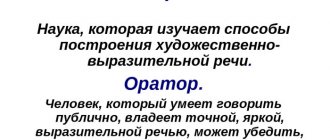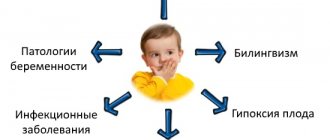Updated July 24, 2021 606 Author: Dmitry Petrov
Hello, dear readers of the KtoNaNovenkogo.ru blog. Communication through speech became possible after the evolution of animals into humans.
Ancient people used sound signals to warn of danger or convey important information that a bush with edible berries had grown nearby.
Today, verbal communication is something that every person cannot do without. Starting from morning coffee over instant messengers to conversations at work with colleagues about the boss’s new relationship.
Verbal and non-verbal communication - what is it?
Verbal - This word comes from the Latin "verbalis", which means verbally . Those. communication in this case occurs through words.
There are three types of verbal communication:
- Speech is communication through words (dialogues, monologues).
- Written communication - by hand, printing on a computer, SMS, etc.
- Internal - your internal dialogue (thought formation).
Nonverbal - other types of communication other than verbal. What could it be:
- Gestures, facial expressions and postures - all this tells us a lot if you know how to read them.
- Visual - scanning a person in the first seconds when you see him: determining gender, age, assessing appearance and facial expression.
- Acoustic nonverbal perception is an assessment of the voice (its rhythm, timbre, volume, brightness, pauses, cough, filler words).
- Tactile non-verbal communication - touching (has a very significant meaning).
- Some smells attract you, while others repel you.
- Mobility - enlivens perception, but if there is too much mobility, fatigue occurs.
- Boundaries of personal space - crossing them takes a person out of his comfort zone or, conversely, brings him closer together.
Communication as a way to carry out life activities for a person
Well-known psychologists have determined that a person makes two types of contacts in his life:
- With nature.
- With people.
These contacts are called communication. There are many definitions for this concept. Communication is called:
- a special form of interaction between people and their interpersonal relationships;
- a friendly or business relationship between a person and another person;
- interaction of a group of people (starting from 2 people) for the exchange of information, knowledge of the surrounding world, which can be of an affective-evaluative nature;
- process of conversation, conversation, dialogue;
- mental contact between people, which manifests itself through a sense of community, performing joint actions, and exchanging information.
Verbally - this is our difference from the other living world
Words that are composed into speech are the unit of our communication with you. We use them both in oral pronunciation and in writing. Or typing (typing on the keyboard), if we talk about realities that are closer to us. Such communication is divided depending on who plays what role: speaking - listening, writing - reading.
In order to maintain verbal communication at a high level, you need to develop its components. This is, first of all, vocabulary (what is it?). Reading books, listening to vocabulary, talking with intellectually developed people - all this significantly helps to replenish and expand your vocabulary.
When communicating in writing, it is very important to know the rules of punctuation in order to present information correctly. Often, by placing periods and commas incorrectly, you can distort the meaning or emphasize something wrong. We all remember the cartoon where you had to put the punctuation mark in the right way and save your life: “Execution cannot be pardoned.”
Speech and written communication solves several problems at once:
- Communicative – ensures interaction between people in its large-scale manifestations.
- Cognitive – a person gains knowledge and new information.
- Cumulative – displaying accumulated knowledge (writing notes, books).
- Emotional - you can express your attitude to the world, feelings using words.
- Ethnic – unification of the populations of different countries (according to the language used).
Means of this type of communication
Verbal means of communication include speech, language, and words. Language, as a way for people to communicate and transmit information, appeared a very long time ago. It is a communication tool. A word in a language is a symbolic symbol that can have several meanings at the same time. Verbal communication cannot do without speech, which can be oral and written, internal and external, and so on. It should be noted that inner speech is not a means of transmitting information. She is not accessible to the people around her. Therefore, verbal speech communication does not include it in its system of means.
Speech helps a person encode certain information and transmit it to the interlocutor. It is through it that the informant influences his interlocutor, instilling in him his point of view. While the interlocutor can perceive it in his own way. This is where the basic functions and verbal means of communication begin to work.
Forms of verbal communication and barriers are not his way
When communicating verbally, we can use different forms and styles in order to convey certain information in a specific context and color. This can be clearly seen in the styles that are used in literature:
- Journalistic - the main goal of such a speech is to convey to people the idea, the essence of what happened.
- Scientific – distinguished by logic and clear statements using terminology and complex concepts.
- Official business is the dry language of laws, where everything is precise and without any epithets.
- Artistic - here it is possible to combine any words and word forms, jargons and dialect (dialectisms), speech is filled with unimaginable images and colors.
- Conversational - characterizes both individual dialogues in works and our communication with you when we meet an acquaintance.
Speech interaction can be divided according to the number of people who take part in it:
- Monologue (one person): speaking - at meetings in front of someone or reciting a poem in front of the class;
- report - important information, usually supported by numbers;
- report - similar to a report, but provides more extensive information and description;
- lecture – presentation of useful information to the audience.
- ordinary conversation - exchange of greetings and thoughts;
Despite the fact that we communicate in the same language, various barriers to verbal communication :
- For example, phonetic. The interlocutor may have a speech impediment, unpleasant diction, choose an unusual intonation, sprinkle words with parasites, etc...
- Semantic interference arises between people from different countries, with different mentalities, or even when raising children in different families.
- A logical barrier is if the interlocutors have different types of thinking, levels of development and intelligence.
- A stylistic barrier is that the interlocutor incorrectly builds a chain of verbal communication to convey information. First we need to attract attention to what we want to say, to interest. Then lay out the basic information; answer questions that your opponent may have. After this, give him time to think about it so that he can draw conclusions or make a decision.
Features of speech communication processes
Processes of verbal communication may occur with certain difficulties. Since two or more people take part in such communication, with their own interpretation of the information, unforeseen tense moments may arise. Such moments are called communication barriers. Both verbal and nonverbal means of communication are subject to such barriers.
- Logical - a barrier at the level of logic of information perception. It occurs when people with different types and forms of thinking communicate. The acceptance and understanding of the information provided to him depends on a person’s intelligence.
- Stylistic - occurs when the order of the information provided is violated and its form and content do not correspond. If a person starts the news from the end, the interlocutor will have a misunderstanding of the purpose of its presentation. The message has its own structure: first the interlocutor’s attention arises, then his interest, from there comes a transition to the main points and questions, and only then a conclusion from everything said appears.
- Semantic - such a barrier appears when people from different cultures communicate, there is a discrepancy between the meanings of the words used and the meaning of the message.
- Phonetic - this barrier arises due to peculiarities of the informant’s speech: unclear speaking, quiet intonation, shift in logical stress.
Nonverbal communication is something we inherited.
Nonverbal communication is body language (like the rest of the animal kingdom). Facial expressions, gestures, postures, touches . As well as visual and acoustic perception, smells, distance and movement of communicating objects - everything is exactly like that of animals.
All this can carry a lot of information, so you shouldn’t neglect this format in order to make the right impression on people (pleasant perfume and appearance, voice and manner of movement).
It is important not only to interpret these signals correctly, but also to send them correctly to the interlocutor. Nonverbal communication serves not only as a complement to conversation using words, but in some situations it can completely replace it.
There are gestures that indicate greeting or farewell. Communicative expressions also include expressions of misunderstanding, increased attention, denial or agreement. There are also modal ones - they show a person’s attitude to what another person is telling him. Facial expressions can show both trust and its complete absence.
Accents are something that can be successfully placed using non-verbal means, if this cannot be done fully with intonation. After all, you often need to indicate to your interlocutor what you really consider important, where to focus your attention. So that secondary information does not take a lot of time to analyze and make a decision.
Sadness, anger, joy, sadness, satisfaction - these are things that can best be emphasized through verbal means (you can even fully show these feelings with your gestures and facial expressions). Therefore, if you are attentive to your interlocutor, you can read his state without words (empaths, whom we have already talked about, are famous for this).
Don't forget about poses and posture. It is the form and behavior of the body that provides just as much information. Can be dominant or submissive, calm or tense, constrained or completely open.
The distance between interlocutors can also be analyzed. The closer they are, the more they trust each other. If it’s really far away, is it worth talking about at least a small presence?
Means of nonverbal communication
Nonverbal communication is an external form of manifestation of a person’s inner world. Verbal and nonverbal means of communication are correlated in one message to varying degrees. They can complement each other, accompany, contradict or replace. It has been proven that the transfer of information is carried out using words only 7%, sounds occupy 38%, and non-verbal means occupy 55%. We see that nonverbal communication occupies a very important place in people's communication.
The main means of communication without words are gestures, facial expressions, pantomime, eye contact systems, as well as a certain intonation and tone of voice. The main means of nonverbal communication also include human postures. For those who know how to interpret them, postures can say a lot about a person’s emotional state.
Features of nonverbal communication
In communication without words, everything is important: how a person holds his back (posture), at what distance he is, what gestures, facial expressions, postures, glances he has, and so on. There are certain areas of nonverbal communication that determine the effectiveness of communication.
- Public - more than 400 cm from the informant; such communication is often used in classrooms and during rallies.
- Social - 120-400 cm distance between people, for example, at official meetings, with people we don’t know well.
- Personal - 46-120 cm, conversation with friends, colleagues, there is visual contact.
- Intimate - 15-45 cm, communication with loved ones, you can speak quietly, tactile contact, trust. If this zone is forcibly violated, blood pressure may increase and the heart rate may increase. This phenomenon can be observed in a very full bus.
Verbal and nonverbal communication are processes that will help achieve effectiveness in negotiations if these zones are not violated.









